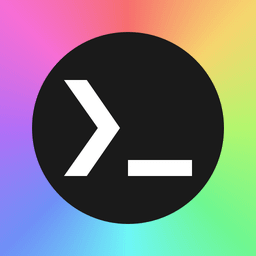

My fav prog band no doubt


My fav prog band no doubt
Im glad you are not over ambitious with your schedule. An episode every three weeks / month is a great way to keep going. I remember when privacy guides said they were going to do a “this week in privacy” which unfortunately lasted about 6 weeks. I wish you best of luck!


Ive started writing in typst. Its simple enough when doing not so complicated things, but an entire ecosystem is available the moment I want to do something complicated. But it does not have LOCAL graphical editor, but there is an online version you can use. Ive never tried it.
Jumping in over your head is how you learn. Just be patient!
I think the photo gives the wrong impression. Its completely unrelated to the question.
Congratulations! I’m glad it worked well for you. Mint is a great choice as well.
https://appflowy.com/ is another possibility.
Theres three things at play here: nix, nixpkgs, and NixOS.
Nix is a programming language. Its designed as its primary purpose to configure, build, and install software.
Nixpkgs is a collections of mamy bundles of premade nix code called derivations. These derivations include the build instructions for applications and the configuration options for those applications. This part is most equivalent to a package repository, but it does not contain prebuilt packages. It only contains the instructions for building it.
Nix has a wide variety of tools for managing these derivations. This includes downloading derivations from nixpkgs and building them locally on your machine (or finding prebuilt packages from a cache). Nix shell is one of those tools that downloads a package temporarily, and makes it available in your shell. You wouldnt use nix shell for installing things permanently.
The OS built with nix as the primary package manager is NixOS. It allows you to define your entire system state as a derivation: your systemd units, installed packages, user configuration, graphical environment, etc.
The best part of NixOS is that it takes the OS and represents the state of the computer as a single repository of code. If you look up someones nixos configuration on GitHub, you’ll see a single collection of files (filled with derivations!) that completely and totally define the state of the system.
Lollypop looks awesome. Thanks for recommending. Welcome back to NixOS


I use borg backup. It, and another tool called restic, are meant for creating encrypted backups. Further, it can create backups regularly and only backup differences. This means you could take a daily backup without making new copies of your entire library. They also allow you to, as part of compressing and encrypting, make a backup to a remote machine over ssh. I think you should start with either of those.
One provider thats built for being a cloud backup is borgbase. It can be a location you backup a borg (or restic I think) repository. There are others that are made to be easily accessed with these backup tools.
Lastly, I’ll mention that borg handles making a backup, but doesn’t handle the scheduling. Borgmatic is another tool that, given a yml configuration file, will perform the borgbackup commands on a schedule with the defined arguments. You could also use something like systemd/cron to run a schedule.
Personally, I use borgbackup configured in NixOS (which makes the systemd units for making daily backups) and I back up to a different computer in my house and to borgbase. I have 3 copies, 1 cloud and 2 in my home.


Its all local. Ollama is the application, deepseek and llama and qwen and whatever else are just model weights. The models arent executables, nor do the models ping external services or whatever. The models are safe. Ollama itself is meant for hosting models locally, and I dont believe it even has capability of doing anything besides run local models.
Where it gets more complicated is “agentic” assistants, that can read files or execute things at the terminal. The most advanced code assistance are doing this. But this is NOT a function of ollama or the model, its a function of the chat UI or code editor plugin that glues the model output together with a web search, filesystem, terminal session, etc.
So in short, ollama just runs models. Its all local and private, no worries.
Darn, their whole page is bugged for me in mobile